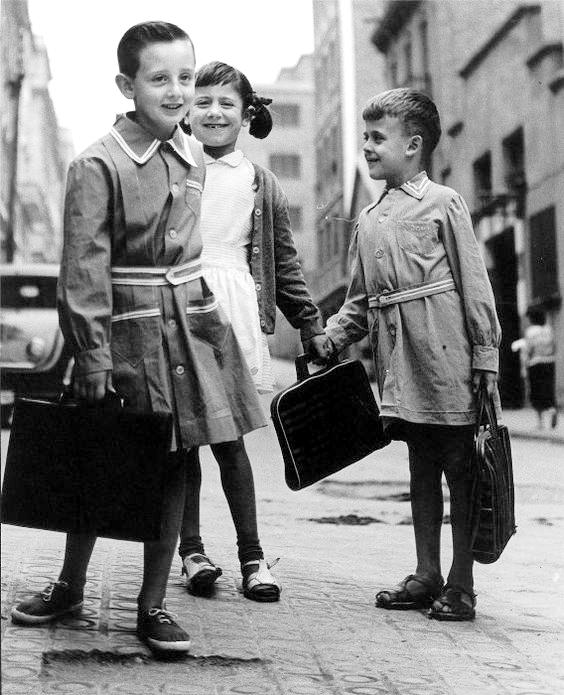
Figure 1.-Here we see French children off the school in the morning in ghe 19509s. Notrice the stripe detailing onthe boys' sschool smicks. Because the boys' smocks are so similar, we believe that they are probably siblings.-s. |

|
Detailing on smocks was not all that common. They represent a small fraction of the smocj images we hve collected in our archive. We do, however, see some examples. Most smocks, except for gingham smocks were solid colors. A few had detailing of various forms to provide a little contrast and to make them more fashionable. Mothers apparently wanted to add some detailing to make the plain colored smocks a little more attractive. This did not begin until the interwar er, but seems most prevakebt in the 1950s. Contrasting fabrics or cloths can be used in the detailing. This can be fabric in a different pattern and or color. We also notice braid. HBC believes that this was primarily the mothers work. We doubt if the boys were all that interested in the detailing.
We note two types of pattern detailing, ginham and smock detailing. As far as we can tell, this was most prevalent in the 1950s, just before smocks began to decline in popukarity. There are probably more patterns , but this is what we have noted so far. We note that the boy here has ginham derailing. Gingham is a medium-weight balanced plain-woven fabric. But we refer to a ginham pattern because ginham was so scommonly dome with check or plaid patterns in white and a bright color (usually red or blue) which were made from dyed cotton or cotton-blend yarns. Ginham was presumably chosen because it was a popular material for smocks and some smocks were done in gingam. The boy on the previous page has plaid ginham detailing on his collar and front, just above the smocking. This patterns were often used for entire smocks. Gingham was a popuar fabric for smocks. In addition to ginham patterns, we also see stripes being used for detailing. Gere we have to good examoles(figure 1). The stripes commonly appeared on the collars, waist belts, and around pockets.
Sometimes contrasting colors rather than patterns Were used for detailing. I am not sure just what colors were used. The examples we have found comefrom the 1950s bedore color photography was common. As they weere often used in lighter-colored smocks,the color used was dark. We believe it was generally a darker shade of wha ever color was used for the smock. In some cases stripes might be added long with the color patch. Solid colored detailing could presumably also be used on patterned smocks, but we have not yet found examoles. As with the patterened detailing, the same detailing might be repeated on different parts of the smock.
One common way of detailing school smocks was the use of "croquets". We are not sure just when croquets were first used. We notice "croquets" being widely used in the 1950s, so presumably Croquets are braid trim added to clothing to give a chic look. Croquets for example are added to edge the collars of blouses, smocks, rompers, and dresses according the mother's sewing skills. Most of the crquets used on smocks were white, but some colored ones were also used. They were used on boys' smocks to about 10 years of age, but on smocks for older girls.
